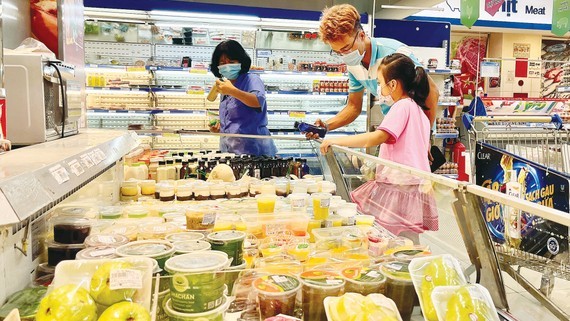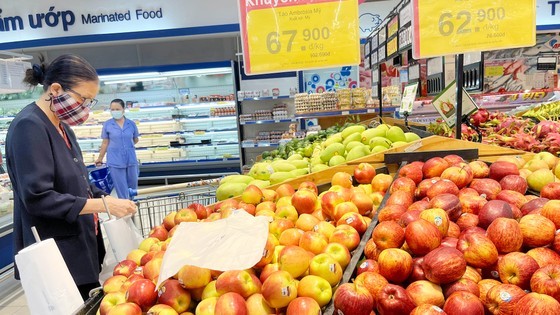
Representatives of the Western Coach Station informed yesterday that 4 transport companies, namely Kumho Samco Buslines Transport Co. Ltd., Hoa Mai Transport and Tourism Co. Ltd., Toan Thang Transport Co. Ltd., and Rach Gia Branch Cooperative, are applying a drop in transport fares by 6-12 percent. Representatives of the Eastern Coach Station also informed of a transport fare reduction by about VND10,000 per ticket (US$0.43) from Hong Son Transport Co.
Both Coach Stations stated that it is rather hard for transport enterprises to decrease their fares much since they only increase these prices once during this fuel price fluctuation.
Tran Viet Huy from Vietnam Logistics Business Association said that since this February, international sea freight rates have had certain drops. For instance, a 20-foot container from Vietnam to EU costs $3,000 less to only $4,000. The price for such a container from Vietnam to the West Coast of the US halved to $7,000. However, the domestic freight rates are still rather high, especially from the North to the South of Vietnam.
Vietnam Automobile Transportation Association explained that slowness in freight rate drop is because when fuel prices reached their peak not a long time ago, many enterprises only increased their rates by about 10 percent even though it accounts for 50 percent of the total operation cost. Nevertheless, the Transport Ministry said that if fuel prices continue to go down, these companies must consider a price drop soon.
On August 2, Ho Chi Minh City Department of Market Surveillance informed that it is now checking different markets, stores, and malls throughout the city to handle cases of store owners purposedly maintaining high goods prices, seeing that fuel prices have had remarkable drops. Along with that is its propaganda campaign to raise the public awareness about the harms of keeping high merchandise prices in order to protect consumer rights and stabilize the market.
The prices of essential commodities are stabilized by various department stores and supermarkets to keep them approachable to the general public. For example, Co.opmart is offering a 10-25-percent discount on dairy products, dried food, meat and eggs. BigC is also running a discount campaign for cooking oil (a drop to VND260,000 per 5-liter bottle), detergent (a drop of VND77,000 per 3.8-liter pack), and especially necessary items for the new school year (a decrease of 10-30 percent).
Wholesale produce markets of Thu Duc, Binh Dien, and Hoc Mon see stable prices in most items and a supply volume of about 2,500 tonnes each day, leading to unexpected price rise. The prices of vegetables and fruits are nearly the same as those a month ago.
Explaining the reason of no price drop yet, many salesmen stated that when fuel prices were still high, transport enterprises from Lam Dong Province and the Mekong Delta must support their clients, and hence only a slight increase of freight rates. Now they need to keep these rates to compensate for the profit loss before.
Another reason comes from high animal feed prices owing to a disruption of the global supply chain. This results in difficulties for a price drop in eggs or poultry meat.

In Da Nang City, supermarkets are adjusting the prices of essential commodities to better serve their customers, along with various promotional campaigns. Director of Co.opmart Son Tra Le Thi Hien informed that her supermarket is working with its partners who supply rice, meat, dairy products, spices, dried food for a price decrease of 10-25 percent in the next 3 months.
In the Central Highlands, even though each day there are hundreds of trucks transporting vegetables and flowers here to other parts of the country, the freight rates see no signs of reduction. In particular, produce sent to areas from Da Nang City northwards costs VND6,000 a kilo ($0.26). A crate of flowers costs VND300,000 ($12.8). sent to the Southern areas, these items cost VND40,000 ($1.7) a 25-kilo crate of goods. The rate of goods sent by air is VND15,000 a kilo (0.64).
Director of Gia Lai Province Department of Industry and Trade Pham Van Binh said that even with a fuel price drop, the prices of merchandise and services in the province still stay the same high level. The department is working with businesses and supermarkets sited in the province for a price adjustment soon.
Similarly, the prices of commodities and services, especially food, in both the Southwest and Southeast regions of Vietnam are still rather high despite fuel price reductions. Noticeably, the prices of shampoo and shower gel even increase by 4-21 percent from August 2, 2022 as stated by P&G Distributor here. Pork prices in Bien Hoa City are still the same as those in May, at around VD140,000 a kilo ($6). Seafood sold in markets of Vung Tau City still cost 15-20 percent higher compared to a month ago.
The good news is fuel price drop has greatly encouraged fishermen in the South to resume their work. For instance, in Song Doc estuary in Ca Mau Province – one of the most bustling fishing ports in the Mekong Delta, fishermen have estimated a profit and are ready to go out catching fish again.
























